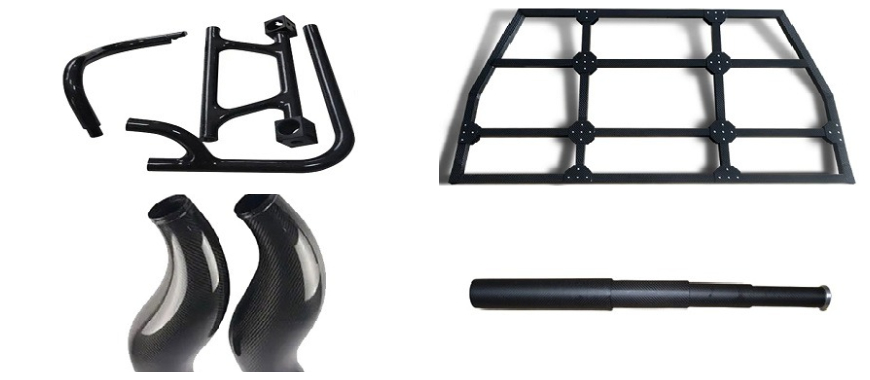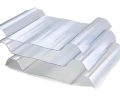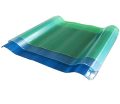
Fiberglass carbon fiber weave is a unique composite material combining fiberglass and carbon fiber for superior performance. This hybrid material offers a balance of strength, flexibility, and lightweight properties, making it ideal for demanding applications. Fiberglass provides durability and cost-effectiveness, while carbon fiber adds rigidity and enhanced tensile strength. Together, they create a material with versatile applications across industries. When compared to twill weave, fiberglass carbon fiber weave stands out for its distinct texture and functionality. Twill weave offers a smoother, diagonal pattern that enhances flexibility and formability. In contrast, fiberglass carbon fiber weave focuses on structural integrity and multi-directional strength. Selecting the appropriate weave depends on the intended use and specific design requirements.
Applications of Fiberglass Carbon Fiber Weave
Common Applications
Aerospace: Lightweight and Strong Composite Structures
Fiberglass carbon fiber weave is a critical material in aerospace engineering, valued for its lightweight and durable properties. It contributes to fuel efficiency by reducing overall aircraft weight while maintaining the necessary structural integrity. The material’s high tensile strength ensures resistance to stress and strain during flight.
It is commonly used in components like wings, fuselage panels, and interior fittings. Engineers rely on its ability to withstand extreme conditions, including temperature fluctuations and high-altitude pressures. Furthermore, the hybrid material can be customized for specific performance requirements, making it indispensable in cutting-edge aerospace design.
Marine: Corrosion Resistance for Hulls and Components
In marine environments, fiberglass carbon fiber weave offers unparalleled resistance to corrosion caused by saltwater and humidity. This makes it ideal for boat hulls, deck components, and underwater structures.
Its lightweight nature ensures improved vessel performance and reduced fuel consumption. At the same time, the durability of the material allows it to endure mechanical stress, such as waves and impacts. Marine engineers frequently choose fiberglass carbon fiber weave for its ability to extend the lifespan of marine structures while requiring minimal maintenance.
Automotive: Durability and Performance for Vehicle Panels
In the automotive industry, fiberglass carbon fiber weave is used to manufacture vehicle panels, chassis components, and interior parts. It enhances safety by absorbing impact energy in crash scenarios while reducing the vehicle’s overall weight.
This material also improves fuel efficiency and offers aesthetic appeal due to its sleek texture. Customization options allow manufacturers to design components tailored to performance and design requirements, reinforcing its importance in modern automotive applications.
Consumer Goods: Stylish and Durable Designs
Fiberglass carbon fiber weave is increasingly used in consumer products like sports equipment, electronics, and fashion items. Its stylish appearance, combined with durability, makes it a preferred choice for high-end products.
Applications include lightweight bike frames, protective cases for devices, and design-forward furniture. Consumers appreciate the combination of functionality and aesthetics, reinforcing the material’s growing demand in daily-use products.
Benefits in Specific Use Cases
Strength and Flexibility in Load-Bearing Structures
One of the standout benefits of fiberglass carbon fiber weave is its exceptional strength and flexibility. In load-bearing structures, this hybrid material ensures stability while allowing for minor deformations under pressure.
The weave’s multidirectional strength distribution enables it to handle diverse stress points, making it ideal for bridges, towers, and industrial frameworks. Its flexibility helps absorb shock loads, preventing structural failures. For engineers, fiberglass carbon fiber weave represents an optimal solution where reliability and adaptability are paramount.
Resistance to Environmental Factors Like Moisture and UV Exposure
Another significant advantage of fiberglass carbon fiber weave is its resistance to environmental factors, including moisture, UV radiation, and temperature fluctuations. Unlike traditional materials, it does not rust or degrade easily when exposed to harsh conditions.
This property is particularly valuable in outdoor applications such as construction materials, signage, and solar panel frames. By minimizing environmental impact, fiberglass carbon fiber weave ensures longevity and reduces maintenance costs, making it a sustainable choice across industries.
Top Fiberglass Carbon Fiber Paint Tips and Tricks
Factors to Consider When Choosing Fiberglass Carbon Fiber Weave
Choosing the right weave type is crucial when selecting fiberglass carbon fiber weave. Twill weave is known for its diagonal pattern, offering enhanced flexibility and drapability, making it ideal for complex contours. This flexibility allows the material to adapt to irregular surfaces without losing strength.
Plain weave, in contrast, features an over-and-under pattern that provides excellent stability. It is commonly used for applications requiring flat surfaces and a more rigid structure. Although less flexible, plain weave excels in uniform stress distribution and high surface area coverage.
The decision between twill and plain weave depends on the intended use. For aesthetic considerations, twill weave offers a smoother appearance, while plain weave provides a traditional checkerboard look. Understanding these characteristics ensures the material aligns with both functional and visual requirements.
Material Properties
Strength-to-Weight Ratio
Fiberglass carbon fiber weave offers an exceptional strength-to-weight ratio, making it a preferred choice for high-performance applications. This property ensures maximum durability while maintaining minimal weight, which is vital in aerospace, automotive, and marine industries.
In aerospace, this strength-to-weight advantage translates to reduced fuel consumption and increased efficiency. In automotive use, it enhances vehicle safety while improving speed and handling. These attributes make fiberglass carbon fiber weave indispensable for industries where both strength and weight are critical factors.
Resistance to Impact and Environmental Conditions
Fiberglass carbon fiber weave is engineered to withstand significant impact and resist harsh environmental conditions. Its resilience to impacts makes it a reliable choice for applications requiring shock absorption, such as protective panels and safety equipment.
Environmental resistance is another standout feature. The material remains unaffected by moisture, UV radiation, and temperature fluctuations, ensuring longevity in outdoor applications. Its ability to endure these conditions with minimal degradation underscores its importance in construction, marine, and renewable energy projects.
Price Considerations
Factors Affecting Cost
The cost of fiberglass carbon fiber weave varies based on several factors. Weave type significantly influences pricing, with twill weave generally costing more due to its enhanced flexibility and aesthetic appeal. Additionally, the quality of the fibers and the production process impact the overall price.
Customization requirements, such as specific dimensions or thickness, may also affect costs. Buyers should evaluate their project needs to balance quality and budget effectively.
Typical Price Ranges
Fiberglass carbon fiber weave is available across a range of prices to suit different applications. Standard options are budget-friendly, while premium weaves designed for specialized industries command higher prices.
For example, materials intended for aerospace or high-end automotive use may feature additional testing and certifications, contributing to higher costs. Understanding these price ranges helps in making informed decisions for both small-scale and industrial projects.
Making an Informed Choice
Selecting fiberglass carbon fiber weave requires careful consideration of weave types, material properties, and budget constraints. By understanding the factors involved, you can ensure the chosen material meets both functional and aesthetic demands. At GangLong Fiberglass, we prioritize offering materials that balance quality and cost for diverse applications.
Why Fiberglass Carbon Fiber Flat Bar Stock Excels
Sourcing Fiberglass Carbon Fiber Weave
Suppliers and Availability
Overview of Where to Find Fiberglass Carbon Fiber Weave
Fiberglass carbon fiber weave is widely available through specialized suppliers and online platforms. Local suppliers often cater to industries like construction, automotive, and aerospace, providing custom solutions for professional use. These suppliers allow direct consultation to ensure the material meets specific project requirements.
Online marketplaces are a convenient option for sourcing fiberglass carbon fiber weave, offering a variety of weave types and sizes. They allow buyers to compare options across different vendors quickly. However, quality assurance can be challenging without direct inspection, making it essential to rely on trusted sources.
At GangLong Fiberglass, we emphasize offering high-quality fiberglass carbon fiber weave to meet the diverse needs of our clients. By prioritizing material performance and customer support, we ensure that projects are completed successfully.
Buying by the Yard
Benefits of Purchasing by the Yard for Small Projects
Buying fiberglass carbon fiber weave by the yard is a cost-effective option for smaller projects. This approach allows for precise measurements, minimizing waste and reducing overall expenses. Hobbyists and small-scale manufacturers often choose this option for prototyping and minor repairs.
For projects requiring limited quantities, purchasing by the yard ensures that users only pay for what they need. Additionally, it allows experimentation with different weave types, such as twill or plain, before committing to bulk purchases.
Ensuring Quality in Bulk or Small Quantities
Whether buying in bulk or smaller quantities, quality assurance is crucial. Inspect the material for consistent weave patterns and absence of defects. Requesting samples is a practical way to assess the quality before purchasing in large volumes.
At GangLong Fiberglass, we provide customized solutions for buyers, whether they need a few yards for personal projects or bulk quantities for industrial applications. Our focus on quality control ensures customer satisfaction.
Price and Sale Options
Tips for Finding the Best Deals
Sourcing fiberglass carbon fiber weave at competitive prices requires strategic planning. Compare multiple suppliers to evaluate pricing for similar materials. Local suppliers may offer discounts for long-term partnerships, while online vendors often provide promotional deals.
Seasonal sales are another excellent opportunity to secure discounts. Monitoring sales events or subscribing to supplier updates can help buyers capitalize on these offers. Bulk purchases often result in reduced costs per unit, making them ideal for large-scale projects.
Seasonal Sales, Discounts, and Bulk Pricing
Many suppliers offer discounts during specific periods, such as end-of-year sales or during industry expos. These events provide an opportunity to purchase fiberglass carbon fiber weave at reduced rates.
For large projects, negotiating bulk pricing can significantly lower expenses. Suppliers may also offer value-added services, like free shipping or cutting the material to custom sizes, further enhancing the purchasing experience. At GangLong Fiberglass, we assist clients in navigating these options to maximize value for every investment.
When sourcing fiberglass carbon fiber weave, considering reliable suppliers, buying options, and pricing strategies ensures a smooth procurement process. At GangLong Fiberglass, we pride ourselves on offering high-quality materials tailored to diverse project needs, ensuring success for every application.
Fiberglass Carbon Fiber Cutter Buying Guide and Tips
Choosing the Right Fiberglass Carbon Fiber Weave
Recap of Key Benefits and Applications
Fiberglass carbon fiber weave offers a unique combination of strength, flexibility, and durability, making it an exceptional choice for various applications. Its lightweight properties are especially beneficial in industries like aerospace, automotive, and marine, where reducing weight without compromising strength is critical. In consumer goods, the material provides a sleek appearance and robust performance, contributing to its growing demand.
The material’s resistance to environmental factors, including moisture, UV exposure, and temperature fluctuations, ensures long-term reliability. Its versatility extends to projects of all sizes, from small custom designs to large-scale industrial applications. At GangLong Fiberglass, we recognize the importance of this material in delivering both aesthetic and functional benefits to our clients.
Final Thoughts on Selecting the Best Weave Type for Specific Projects
Choosing the right type of fiberglass carbon fiber weave depends on the specific demands of your project. Twill weave offers enhanced flexibility and a visually appealing diagonal pattern, making it ideal for complex or aesthetic applications. On the other hand, plain weave provides excellent stability and uniformity, ensuring strong and reliable performance for flat or simple structures.
Consider the strength, flexibility, and appearance needed for your project. For instance, aerospace components may require twill weave for intricate designs, while plain weave might better suit construction materials that demand maximum stability. The team at GangLong Fiberglass is dedicated to guiding clients toward the most suitable weave type based on their project needs.
Encouragement to Prioritize Quality and Suitability for Long-Term Performance
Investing in high-quality fiberglass carbon fiber weave ensures durability and optimal performance over the long term. While budget considerations are important, compromising on quality can lead to higher costs in repairs or replacements. It’s essential to select a material that meets both immediate and future demands.
We encourage customers to evaluate suppliers carefully, prioritize trusted sources, and consider the specific requirements of their projects. At GangLong Fiberglass, we are committed to offering premium materials that balance quality and cost, ensuring our clients achieve their desired results. By focusing on quality and suitability, you can unlock the full potential of fiberglass carbon fiber weave in your projects.
FAQs about Fiberglass Carbon Fiber Weave
Yes, carbon fiber and fiberglass can be combined in various applications. The combination leverages the strengths of both materials. Carbon fiber provides high tensile strength and stiffness, while fiberglass contributes durability and cost-effectiveness. These materials are often layered or woven together to create composites with enhanced properties. This hybrid approach is used in industries like aerospace, automotive, and marine engineering to improve performance and reduce weight. However, proper engineering is essential to prevent issues such as uneven stress distribution. For the best results, materials should be chosen based on their compatibility and the project’s specific requirements.
Yes, carbon fiber can be woven into different patterns to suit various applications. The weaving process involves bundling carbon fibers into tows, which are then arranged into specific patterns like plain, twill, or satin weave. Each weave type serves a unique purpose. For example, plain weave offers stability, while twill weave provides better flexibility and an attractive diagonal pattern. Woven carbon fiber fabrics are used in applications ranging from aerospace components to automotive parts and even consumer goods. The ability to weave carbon fiber adds versatility, making it adaptable to complex shapes and high-performance demands.
The strength of a carbon fiber weave depends on the intended application and stress factors. Generally, unidirectional carbon fiber is considered the strongest because all fibers are aligned in a single direction. However, in woven forms, twill weave is highly regarded for balancing strength and flexibility. It has fewer crimps compared to plain weave, allowing better load distribution and reduced stress points. While strength is a critical factor, the choice of the strongest weave also depends on other factors like the required flexibility, weight, and aesthetics.
The two basic weaves of fiberglass are plain weave and twill weave. Plain weave features an over-and-under pattern, creating a checkerboard-like appearance. This weave provides excellent stability and is ideal for applications requiring consistent thickness and rigidity. Twill weave, on the other hand, has a diagonal pattern, offering more flexibility and better drapability. It is preferred for applications involving complex curves or surfaces. Each weave type has its unique benefits, and the choice depends on the project’s design requirements and mechanical demands.

As the editor of GangLong Fiberglass, I have years of experience and in-depth research, focusing on cable tray products, fiberglass solutions, and grille systems. I incorporate years of industry insights and practical experience into every content, committed to promoting the progress of the industry. At GangLong Fiberglass, my commitment is reflected in every product, from innovative cable trays to durable fiberglass solutions and sturdy grille systems. As an authoritative voice in the industry, my goal is to provide valuable information to professionals and businesses and promote forward-looking solutions.


